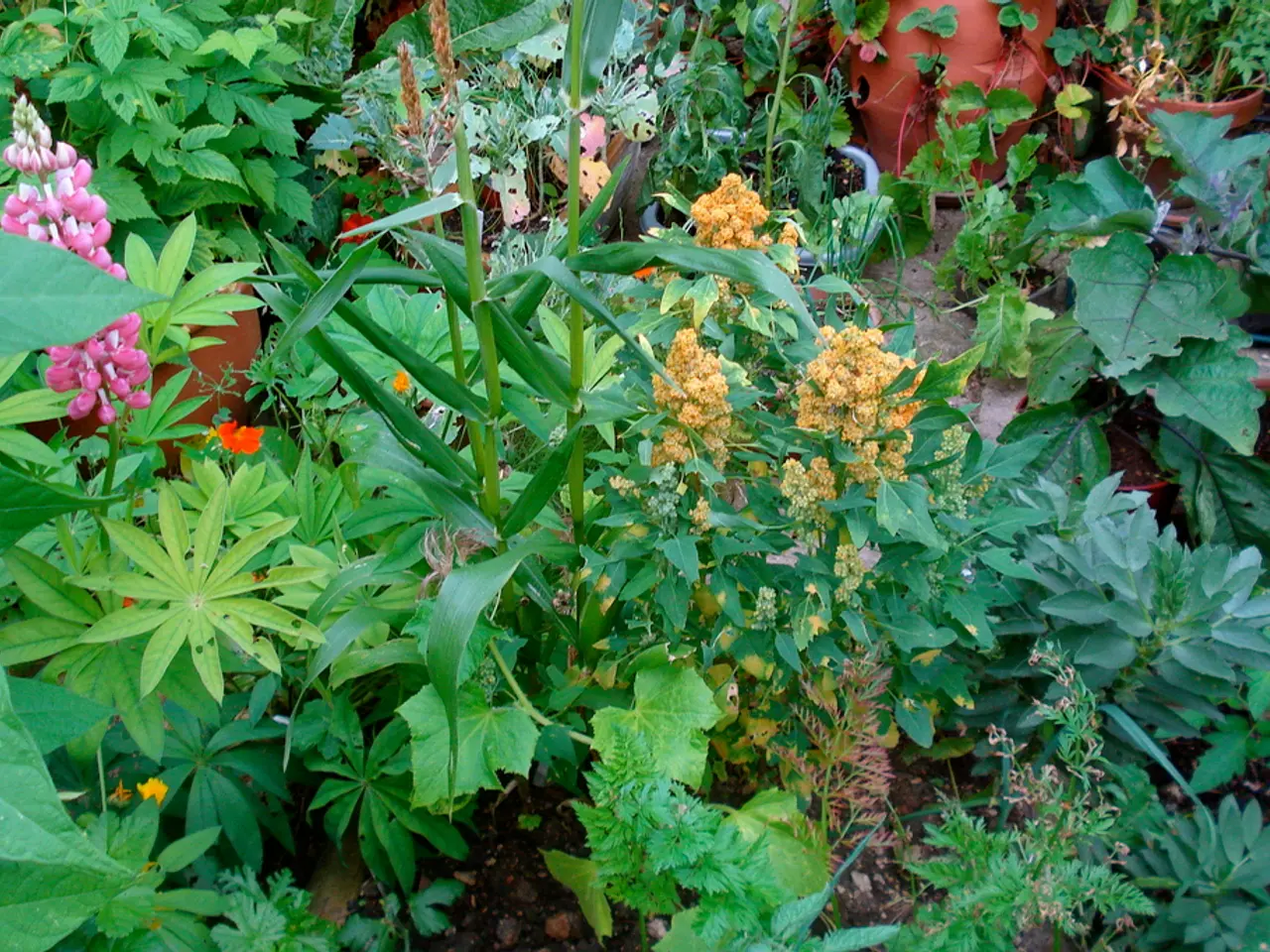Navigating Your Home Garden: Guidelines for Novices in Gardening
In the heart of your backyard or nestled in a sun-kissed corner of your balcony, a home garden can be a source of fresh produce, a reduction in grocery expenses, and a step towards environmental sustainability. To ensure your garden thrives and produces well, it's essential to consider several crucial factors when choosing a location.
The site should receive about 6 to 8 hours of direct sunlight daily, as sunlight is essential for photosynthesis and healthy plant growth. A reliable source of clean water should be nearby for irrigation, and the location should have proper drainage to prevent waterlogging, which can damage plants. The soil should be well-drained, fertile, and have the right texture to support root development and nutrient uptake.
Consider the available space for the garden, as it influences the types and number of plants you can grow, as well as the garden’s layout. Avoid locations near large trees to prevent root competition for water and nutrients. Choose a site compatible with the local climate and specific plant needs, taking into account factors like wind exposure, frost pockets, and heat zones.
Determine the garden’s role to select an appropriate site and plant varieties. Whether you're growing vegetables for production, creating an ornamental garden, or cultivating a shady retreat, the site should be suitable for your intended purpose.
Once your garden is established, regular monitoring is key to its success. Harvest produce at its peak ripeness to ensure optimal flavor and nutrition. Regularly inspect plants for signs of infestation or disease and take appropriate measures to control common pests and diseases like aphids, snails, powdery mildew, and tomato blight.
Natural methods of pest control are favoured by many home gardeners. Employ beneficial insects like ladybugs and use garlic as a deterrent. Companion planting, such as planting garlic near susceptible crops, can also help deter pests naturally. Regular monitoring allows for early detection of diseases, enabling prompt removal of affected leaves or use of organic treatments like neem oil.
Canning became a favourite method for preserving homegrown produce, extending its life and opening up culinary possibilities. Home gardening not only provides fresh and organic produce but also promotes physical activity. Winter offers a chance for reflection and planning to make informed decisions for the upcoming season.
For beginners, some easy plants to start with include tomatoes, lettuce, herbs, peppers, and marigolds. With the right location, care, and attention, your home garden can become a harmonious blend of beauty and functionality, offering enjoyment beyond the growing season.
- A home garden, with its plants thriving in a location receiving 6 to 8 hours of daily sunlight, can become a source of fresh, organic produce for your lifestyle and a step towards sustainability in home-and-garden.
- Instead of relying on harmful chemical pesticides, consider employing natural methods of pest control, such as beneficial insects like ladybugs, garlic deterrents, and companion planting, to maintain the health of your plants.
- Canning your homegrown produce is an excellent way to extend its life and open up culinary possibilities, making your garden's fresh produce a year-round asset.
- The selection of plant varieties should be influenced by the garden's purpose, and easy-to-care-for options like tomatoes, lettuce, herbs, peppers, and marigolds are perfect for beginners who want to enjoy the beauty and functionality of gardening in their home-and-garden.




